Have you ever wondered how your cat’s kibble (dry food) is made? If so, we thought you might find the science behind it interesting. We certainly did! ^..^<
Take a walk thru your local pet store and you’ll see dozens of different kibble brands to choose from available in shapes ranging from tiny balls, squares, triangles and even animal shapes like fish or chicken.
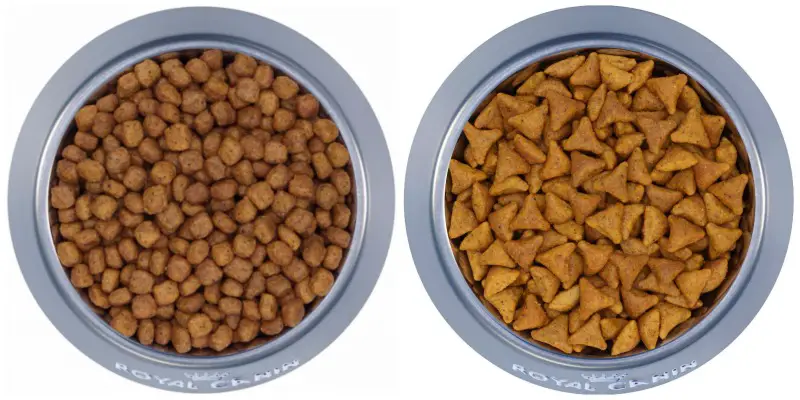
All kibble, regardless of brand, are supposed to be nutritionally balanced and complete, so that your cat’s basic dietary needs are met by the ingredients. However, not all are. Each proprietary recipe from the various kibble manufacturers will include protein sources like beef, chicken and eggs, as well as grains, cereals, vitamins, minerals, and antioxidants.
How Kibble is Made
These raw wet and dry ingredients are first mixed together and then pulverized to make a special paste like dough. Once this dough is prepared, it must then be cooked and formed. This is done by a process called ‘extrusion’ using a machine called an expander (or extruder).
The dough is fed into the expander which cooks it using pressurized steam or hot water. The cooked dough is pushed (or extruded) through specially sized and shaped holes (called die), where it is then cut off by sharp blades. The timing of the whole process is critical because if the cooked dough isn’t cut quickly enough (while still compacted from the high pressure) it will naturally puff up and no longer be usable as kibble.
These newly formed dough pieces are then passed through a dryer to remove any remaining moisture. The resulting kibble is sprayed with fats, oils, minerals and vitamins and sealed in packages ready for consumption.
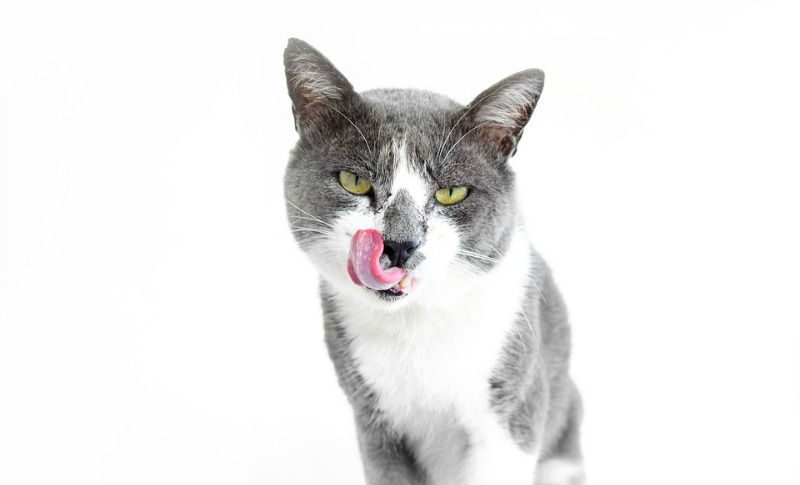
Fun Fact: These extruder machines were originally created to produce puffed breakfast cereals, and subsequently modified for manufacturing large quantities of nutritious, shelf-stable pet foods.
Kibble Science
Some of you may know that our cats are only fed Royal Canin food (both kibble and wet) and since Royal Canin is a leader in kibble research and development, we asked them to share a bit more about their unique design process.
Here’s what they shared with us…
As far as cats are concerned, the first criteria they exhibit in choosing whether or not they like a particular food is its palatability. In other words, is the food acceptable or agreeable to the cat’s unique palate or taste. This is a critical element in how Royal Canin designs and produces their own kibble.
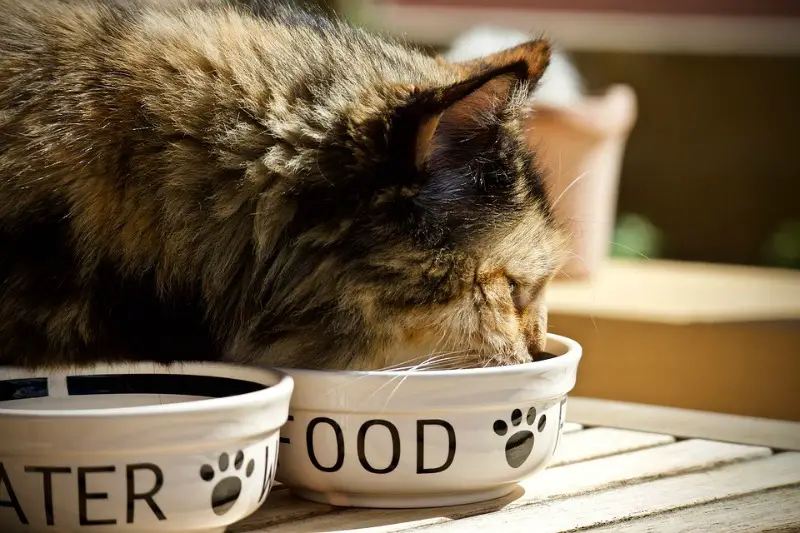
There is actually a four step process that cats (and dogs) use to choose a food:
1. Selection – they decide if they will try the food based on its smell. If it is not appealing, they reject it. Otherwise, they move on to…
2. Seizing – the ability to pick up food and ingest it. If this is easy, they are more likely to eat the food.
3. Taste and aroma
4. Post-ingestion – the feeling the cat (or dog) gets after eating.
The Royal Canin team told us that there are 5 dimensions that directly impact food palatability and these are integral to their manufacturing process:
o Satisfying texture
o Savory aroma
o Adapted kibble shape
o Specific kibble size
o Desirable flavors
Extensive development at the Royal Canin campus in France and use of advanced equipment such as the Texturometer – a tool that measures kibble hardness and the amount of force required to chew or break it – allow them to create specifically shaped kibble to meet the needs of different breed’s ability to pick-up and chew their product.

Size and Shape Matter
A kibble’s shape and size can impact many things like:
- Dental health – It is important that the cat’s teeth penetrate the kibble so that a ‘brushing effect’ can be achieved. This may help to reduce plaque, which can lead to tartar and encourages good oral health.
- Digestion – The more a cat has to chew the kibble, the slower the ingestion speed, which can aid in digestion.
- Satisfaction – Altering the kibble density can help to alleviate hunger between meals by creating a sense of fullness. This can help cats feel satisfied and helps maintain a healthy weight.
Royal Canin takes size, shape, texture and density into consideration when developing their kibble and adapt it to the specific characteristics of each cat (or dog) breed’s needs. Their design team have done extensive research to determine which kibble type and size is best suited for each method of prehension (seizing), and in turn they have created a number of unique and optimal kibble shapes.
For example, the Persian cat is known for its long, beautiful coat and flat (brachycephalic) face. Persians use the lower part of their tongue to pick up kibble, so Royal Canin created an almond-shaped kibble that is easier for them to eat. See video below:
Other Important Design Criteria
The Royal Canin team does not develop their foods based on buyer (human) trends, but instead develop every diet according to what they learn from cats (and dogs).
Fun fact: Did you know that cats prefer food near body temperature? The reason being that it’s similar to prey caught in the wild. They are less attracted to foods at room temperature or colder and also foods that are too warm.
Other notable considerations in kibble science include hardness and crispness which play a role in palatability. Through careful kibble design the Royal Canin team are able to actually slow down the speed of eating for better digestion.
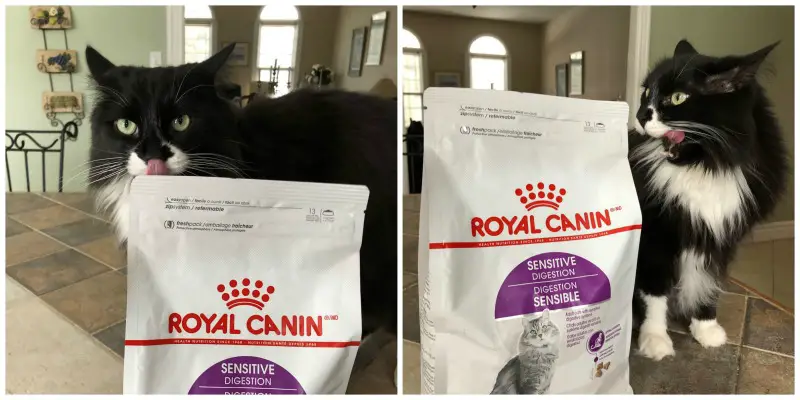
Above our tuxie (Newman) unabashedly enjoying his daily kibble.
In closing, kibble science may not be rocket science, but there’s a whole lot more than meets the eye.
Disclosure
This post is sponsored by Royal Canin. While we are being compensated for helping spread the word about Royal Canin, The Purrington Post only shares information we feel is relevant to our readers. Royal Canin is not responsible for the content of this article. To learn more about Royal Canin, visit www.royalcanin.com or on Facebook at facebook.com/royalcanin.us.
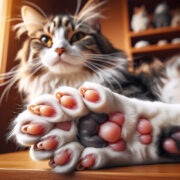
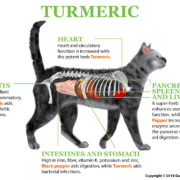
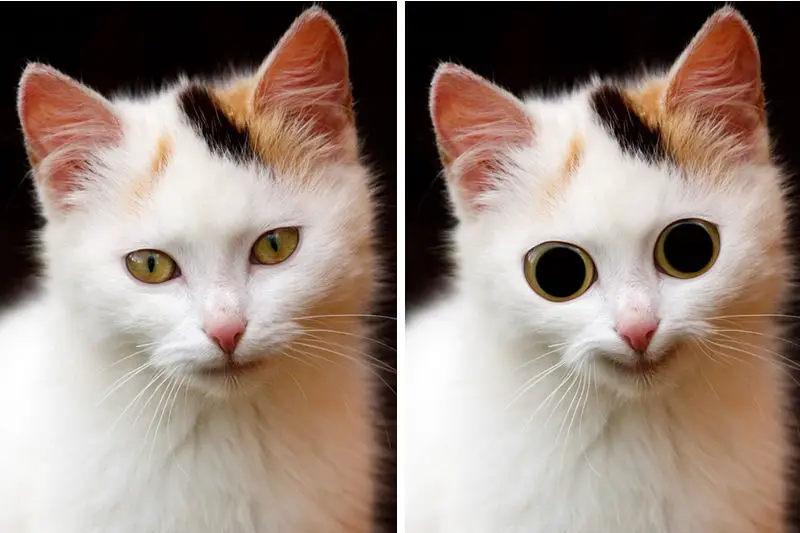
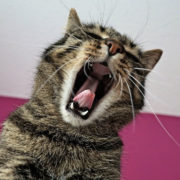

Appreciate this — thank you so much! Unlike some who criticize dry foods and say they are not good or even bad for health, I believe that high-quality dry foods, fed in tandem with high-quality wet foods, can be very healthy for cats. I have fed Royal Canin, among other brands.
I love this cat food! It has made a huge difference in my cat’s life! He has a sensitive stomach. Our vet recommended this brand and flavor. It has been amazing to see my cat feel so much better and to actually have more energy.
No. And the reason is that Peanut had a urinary blockage. Since switching to wet only we have not had an issue. Previous cats I have had the pleasure to share my life with have eaten it and with no problems that were obvious, but since Peanut’s issues and the research I’ve done, I am a true believer in wet and raw over dry kibble. Just my opinion.